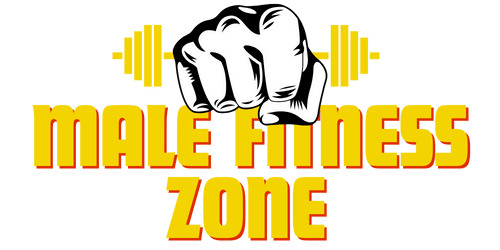If you’re looking for a new and innovative way to boost your fitness routine, look no further than fascia workouts. This emerging trend in the fitness world focuses on strengthening and stretching the fascia, a connective tissue that surrounds and supports our muscles and organs. By incorporating fascia workouts into your exercise regimen, you can enhance your flexibility, improve your range of motion, and ultimately enhance your overall performance. Get ready to discover the power of fascia workouts and revitalize your fitness journey like never before!

Understanding Fascia
What is fascia?
Fascia is a connective tissue that surrounds and supports muscles, bones, and organs in the body. It is a continuous web-like structure made up of collagen fibers and has a gel-like consistency. Fascia provides stability and integrity to the body, allowing it to function optimally.
The role of fascia in the body
Fascia has multiple important functions in the body. It acts as a protective layer, defending against external forces and potential injuries. Fascia also helps with maintaining posture and balance. It plays a significant role in maintaining flexibility and range of motion. Moreover, fascia serves as a communication network, transmitting signals between different body parts.
Why is fascia important in workouts
Fascia plays a crucial role in workouts as it directly affects muscle performance and recovery. Ignoring fascia can lead to muscle imbalances, decreased flexibility, and increased risk of injury. By incorporating fascia workouts into your routine, you can improve your overall fitness level, enhance athletic performance, and prevent future injuries.
Benefits of Fascia Workouts
Improved flexibility and range of motion
One of the primary benefits of fascia workouts is the improvement in flexibility and range of motion. By targeting and releasing tension in the fascia, you can reduce restrictions and tightness in the muscles. This increased flexibility allows for a greater range of motion in joints, leading to improved performance in activities such as sports and weightlifting.
Reduced muscle soreness
Another significant benefit of fascia workouts is the reduction in post-workout muscle soreness. When we engage in physical activities, our muscles undergo stress, which can lead to the accumulation of toxins and waste products. Fascia workouts help flush out these toxins, promoting muscle recovery and alleviating soreness.
Enhanced athletic performance
By focusing on fascia health, you can enhance your athletic performance. Improved flexibility and range of motion, reduced muscle soreness, and better overall muscle function contribute to increased athletic capabilities. Whether you’re a professional athlete or a recreational sports enthusiast, incorporating fascia workouts into your routine can give you an edge.
Types of Fascia Workouts
Foam rolling
Foam rolling, also known as self-myofascial release, is a popular form of fascia workout. It involves using a cylindrical foam roller to apply pressure to different areas of the body. Foam rolling helps break up adhesions and knots in the fascia, improving tissue mobility and reducing muscle tightness.
Myofascial release
Myofascial release is a more targeted and specific form of fascia workout. It involves applying sustained pressure to specific trigger points or areas of tension in the fascia. This technique helps release adhesions and restore proper tissue function, aiding in muscle recovery and improved flexibility.
Fascial stretching
Fascial stretching focuses on lengthening and realigning the fascia. It involves using specific stretching techniques to target the fascia and increase its elasticity. Fascial stretching can be done in various ways, such as through PNF stretching, dynamic stretching, and practices like yoga and Pilates.
Foam Rolling Techniques
Rolling the back
To foam roll your back, start by sitting on the foam roller with it placed vertically behind you. Slowly lie down, ensuring the foam roller is positioned along your spine. Support your head with your hands and gently roll up and down, targeting different areas of your back. Avoid rolling directly over the spine and maintain a steady, controlled motion.
Rolling the legs
For foam rolling the legs, position yourself on the floor with the foam roller under your thighs. Using your hands for support, slowly roll down to the knees, focusing on areas of tightness or discomfort. You can also target specific muscles by isolating one leg at a time and rolling from the hip to the knee.
Rolling the arms
To foam roll your arms, place the foam roller on the ground and position yourself facing down with one arm extended and resting on the roller. Slowly roll your arm back and forth, targeting the muscles in the forearm and upper arm. Switch arms and repeat the process for a comprehensive arm foam rolling session.
Myofascial Release Exercises
Trigger point release
Trigger point release involves applying pressure to specific areas of tension or trigger points in the fascia. This can be done using a lacrosse ball or other firm object. Locate the trigger point and apply pressure directly on it, holding for a few seconds. Repeat the process on other trigger points to release tension and promote muscle recovery.
Active release technique
The active release technique is a combination of movement and manual pressure to treat muscles, tendons, ligaments, and fascia. It involves actively contracting and stretching specific muscles while the practitioner applies pressure along the affected area. This technique helps break up scar tissue, release adhesions, and restore proper muscle function.
Soft tissue mobilization
Soft tissue mobilization is a hands-on technique performed by a trained therapist. It involves applying sustained pressure and gentle manipulation to release tension and improve the function of soft tissues, including fascia. Soft tissue mobilization helps increase blood flow, improve tissue mobility, and promote healing.
Fascial Stretching
PNF stretching
Proprioceptive Neuromuscular Facilitation (PNF) stretching is a technique that combines passive stretching and isometric contractions. It involves stretching a muscle, followed by an isometric contraction of the same muscle group. This combination helps relax the muscle and increase flexibility by targeting the fascia.
Dynamic stretching
Dynamic stretching involves active movements that mimic the motions of a specific sport or activity. It focuses on stretching the muscles and the surrounding fascia through continuous, controlled movements. Dynamic stretching helps warm up the muscles and improve flexibility while keeping them engaged and ready for activity.
Yoga and Pilates
Practices like yoga and Pilates incorporate various fascial stretching techniques into their routines. These forms of exercise use controlled movements and poses to stretch and lengthen the fascia, promoting flexibility, balance, and overall body awareness. Regular yoga or Pilates sessions can greatly benefit fascia health.
Precautions and Safety Measures
Seek professional guidance
When starting with fascia workouts, it is advisable to seek professional guidance. A qualified fitness or healthcare professional can provide personalized advice, ensure that you are performing exercises correctly, and help prevent any injuries. They can also design a suitable workout plan based on your individual needs and goals.
Start with gentle pressure
When performing fascia workouts, it is essential to start with gentle pressure and gradually increase intensity. Applying excessive pressure or overstretching can lead to discomfort or injury. Listen to your body and adjust the pressure based on your comfort level. Remember, the goal is to release tension and promote healing, not cause additional harm.
Avoid rolling directly over bony areas
To avoid discomfort or potential injury, it is crucial to avoid rolling directly over bony areas, such as the spine or joints. Focus on the muscles and soft tissues surrounding these areas. Be mindful of your body’s sensation and adjust the foam roller or pressure point tool accordingly to ensure a safe and effective workout.
Incorporating Fascia Workouts in a Routine
Warm up before fascia workouts
Before starting any fascia workout, it is essential to warm up your muscles and increase blood flow to the tissues. This can be done through light cardio exercises, such as jogging or jumping jacks, followed by dynamic stretches that target the muscles you plan to work on during the fascia workout. Warming up prepares the body for the upcoming exercises and reduces the risk of injury.
Include other forms of exercise
While fascia workouts can be highly beneficial, it is crucial to incorporate other forms of exercise into your routine as well. Strength training, cardiovascular exercises, and functional movements help improve overall fitness and support fascia health. Combining different types of workouts ensures a well-rounded approach to fitness and maximizes the benefits for your body.
Listen to your body
Throughout your fascia workout routine, it is important to listen to your body and honor its signals. If an exercise feels uncomfortable or painful, adjust the intensity or explore alternative techniques. Everyone’s body is different, and what works for others may not work for you. Pay attention to how your body responds and make modifications accordingly.
Equipment for Fascia Workouts
Foam roller
A foam roller is a versatile and commonly used tool for fascia workouts. It can be used to target various muscle groups and release tension in the fascia. Foam rollers come in different sizes and densities, allowing you to choose what works best for your needs and comfort level.
Massage balls
Massage balls are smaller, more targeted tools that can be used for myofascial release exercises. They are designed to provide localized pressure and reach specific trigger points. Massage balls come in various sizes and textures, providing options for different areas of the body and levels of intensity.
Resistance bands
Resistance bands are a valuable addition to fascia workouts as they provide resistance and tension during exercises. They can be used to activate and strengthen specific muscles, promoting proper movement patterns and muscle balance. Resistance bands come in different strengths, allowing you to choose the appropriate level of resistance for your workout.
Sample Fascia Workout Routine
Foam rolling for 5 minutes
Start your fascia workout routine with a foam rolling session. Spend 5 minutes rolling different areas of your body, focusing on any tight or sore spots. Remember to maintain a slow and controlled pace, applying gentle pressure. Pay attention to your breathing and relax into the foam roller as you roll.
Myofascial release exercises for lower body
After foam rolling, move on to myofascial release exercises for the lower body. Use a massage ball or your hands to target specific trigger points in your glutes, hamstrings, quads, and calves. Apply sustained pressure on each trigger point for about 30 seconds, releasing any tension and promoting muscle recovery.
Fascial stretching routine
Finish your fascia workout routine with a series of fascial stretching exercises. Incorporate PNF stretching, dynamic stretching, or try a yoga or Pilates routine that focuses on lengthening and stretching the fascia. Spend 10-15 minutes performing various stretches, paying attention to your body’s needs and limitations.
Remember to adjust the duration and intensity of each section of the routine based on your fitness level and goals. Feel free to modify the exercises or seek professional advice to tailor the routine to your individual needs.
In conclusion, understanding the role of fascia in the body and incorporating fascia workouts into your routine can have numerous benefits. Improved flexibility, reduced muscle soreness, and enhanced athletic performance are just some of the advantages you can experience. By utilizing foam rolling, myofascial release exercises, and fascial stretching techniques, you can promote optimal fascia health and overall well-being. Remember to prioritize safety, seek professional guidance if needed, and listen to your body throughout the process. With consistency and patience, you can unlock the potential of your fascia and reach new heights in your fitness journey.


